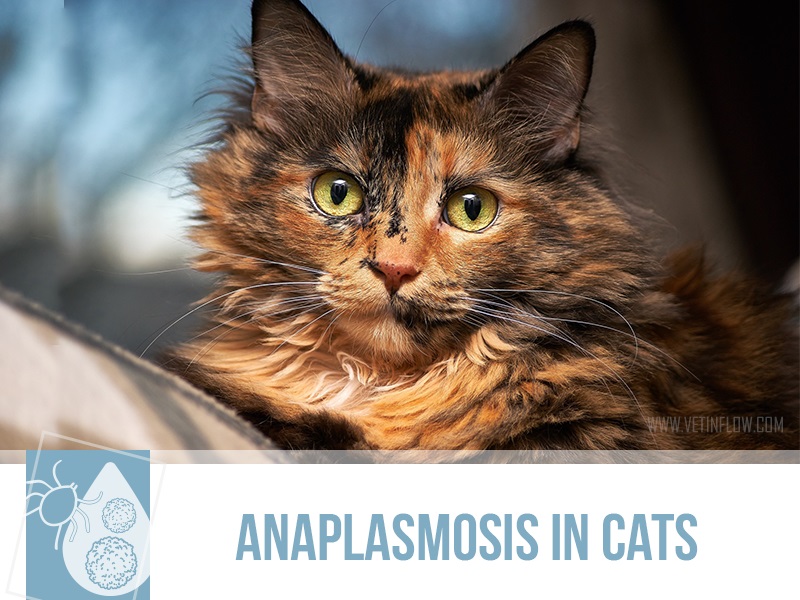
Anaplasmosis in cats

The temperature is rising, the days are longer and the sun is actually around! Summer is one of the best times of the year for many of us but with all of these good things also come some particular dangers.
Ticks are parasites that consume our pets' blood and in exchange, they drop nasty microorganisms in their bloodstream. A lovely deal!
There are many diseases that can be transmitted by ticks and one of them is called anaplamosis caused by Anaplasma phagocytophilum in cats. This bacterium is from the Rickettsiales order which includes other important blood parasites like Ehrlichia and Rickettsia. It has a pretty vast geographic distribution because its tick vectors are found through a wide area and climate, so it's definitely something that you can stumble upon.
After a tick bite, the bacteria are inoculated in the blood stream where they will infect white blood cells and replicate, killing the original cell and moving on to infect other cells.
Infected cats might present with non-specific signs like fever, anorexia, lethargy and dehydration and sometimes lameness, swollen joints, nose bleeding and abdominal pain have been reported. The course is generally mild and can be resolved quickly, especially with a little help from friendly antibiotics which is good news for our fuzzy buddies.
It's important to keep in mind that prevention is the best way to make sure nothing bad happens so staying on top of flea and tick treatment is paramount! Talk to your vet about the best way to control these nasty bugs that best fits your pet and their lifestyle.
Would you like to know more about cats? Check our Feline Courses:
Feline courses
Published: 02 Jun 2017
Read the previous article: Gastric ulcers

